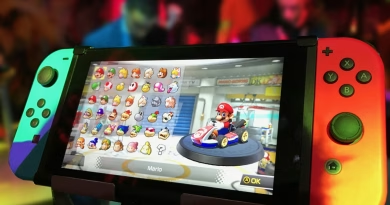The Dream of the Modular Smartphone Is Back. Is It Viable This Time?
Cast your mind back about a decade, to a thrillingly futuristic concept from Google called Project Ara. It was a vision of a smartphone built like a set of LEGOs. Want a better camera? Just slide out the old module and pop in a new one. Need a bigger battery for a long trip? Swap it in. Cracked your screen? Replace it yourself in seconds. It promised a future of ultimate customization, reduced e-waste, and an end to the tyranny of the two-year upgrade cycle.
And then, just as suddenly as it appeared, it was gone. Project Ara was spectacularly canceled, and the dream of the modular smartphone seemingly died with it. The industry concluded that integrated, sealed-up glass slabs were the only way forward.
But the dream never truly went away. Quietly, a new generation of companies, driven by a different set of principles, is reviving the concept. The modular phone is back, but with the ghost of past failures haunting it, we have to ask: what makes this time any different?
Why The Dream Is So Compelling
The appeal of a modular phone is rooted in common sense and frustration with the current state of smartphones.
- Sustainability: The environmental argument is more powerful than ever. Instead of creating 150 grams of e-waste because your battery has degraded or your camera feels outdated, you’d only be replacing a tiny 10-gram module.
- True Personalization: A modular system would allow you to build a phone that is perfect for you. A photographer could invest in a massive camera module with an optical zoom lens. A gamer could slot in a more powerful GPU and extra cooling. A business user could add a physical keyboard or a larger speaker for conference calls.
- Cost Savings: The promise was always cheaper, incremental upgrades. Your phone’s processor is slow? A $200 module replacement is a lot more palatable than a new $1,200 phone.
Why The First Dream Failed
To understand the future, we have to respect the past. Project Ara and other early attempts failed for a few key reasons:
- Technical Complexity: The connectors that linked the modules to the phone’s frame were an engineering nightmare. They had to be incredibly reliable and fast while also being durable enough for constant swapping.
- The Bulk Factor: All those connectors and individual casings made the phones thick, heavy, and clunky compared to the sleek, integrated designs of an iPhone or a Samsung Galaxy. Aesthetics and ergonomics matter.
- The Ecosystem Problem: A modular phone requires a thriving marketplace of third-party modules. But component makers were hesitant to invest in developing products for a niche device with an unproven future.
What’s Different This Time?
The new approach to modularity is less ambitious, but far more practical. It’s driven by a powerful new force in the tech world: the Right to Repair movement.
The new champions of this space, like Fairphone, have shifted the focus from hot-swappable “LEGO” modules to extreme repairability. Their phones aren’t designed for you to change the camera on a whim, but they are designed for you to easily replace a broken screen, a dying battery, or a faulty USB-C port yourself with nothing more than a simple screwdriver.
This pragmatic approach solves many of the old problems. It doesn’t require complex connectors or a massive third-party ecosystem. It directly addresses the primary consumer pain points—broken screens and dying batteries—and aligns perfectly with the growing consumer demand for sustainable products that last longer.
The Verdict: A Niche Revival, Not a Revolution
Let’s be realistic. You won’t be buying a fully customizable, hot-swappable modular phone from Apple or Samsung next year. The design and engineering trade-offs required for that level of modularity are still too great for the mass market, which prioritizes sleekness and simplicity.
However, the spirit of modularity is more alive than ever. It lives on in the push for repairability and user-replaceable parts. The dream hasn’t died; it has matured. It’s less about flashy, swappable modules and more about the quiet, sensible victory of being able to fix the expensive device you already own. The new modular phone isn’t a sci-fi gadget; it’s a sustainable one. And in 2025, that might be a much easier sell.




